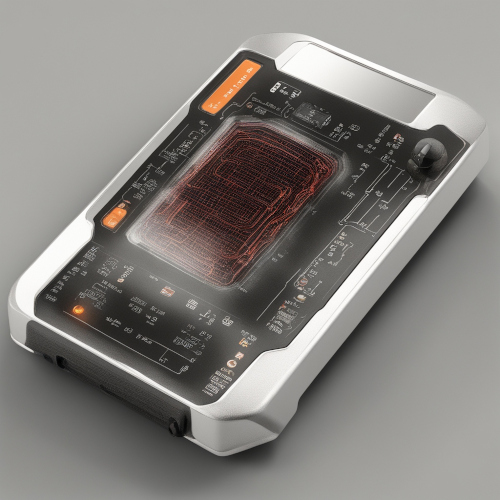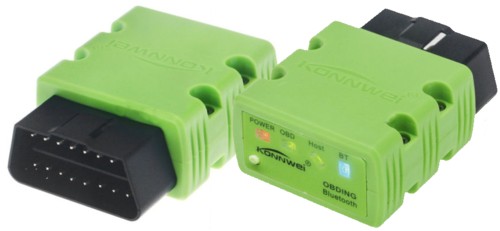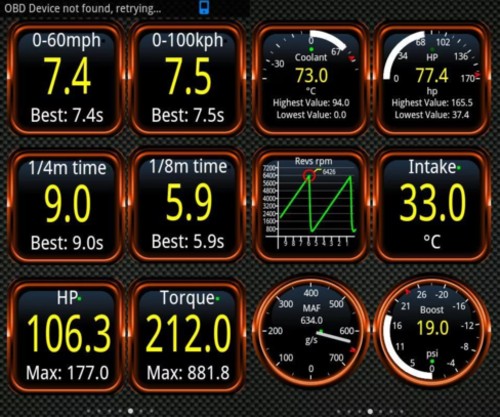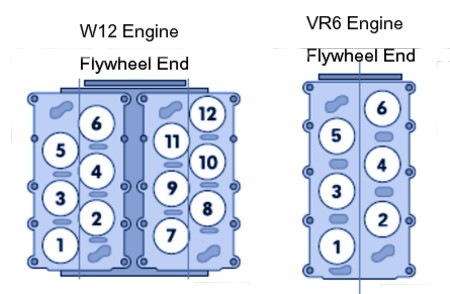VW, AUDI, SKODA & SEAT IMMOBILIZER PROBLEMS
The worst thing that can ever happen to you especially when you're in a hurry to get to an appointment on time, is to turn-on your car's ignition key and see a yellow immobilizer symbol (car with a key below it) flashing in your instrument cluster accompanied by a fairly loud ear piecing audible signal. When you witness this, your car isn't going to go anywhere and neither are you. I suppose there are worst scenarios you could be in like when you stop along a dark and lonely road at night, compelled to take a pee, only to return to your car, to be met by the yellow flashing immobilizer symbol. There are so many VAG Vehicle owners who have experienced some sort of immobilizer problem with their cars and those drivers who haven't, I'm so sorry to say, but its only a matter of time before you do. That sounds very pessimistic, but once again, I'm sorry to say but that's the reality of the situation. It is what it is.
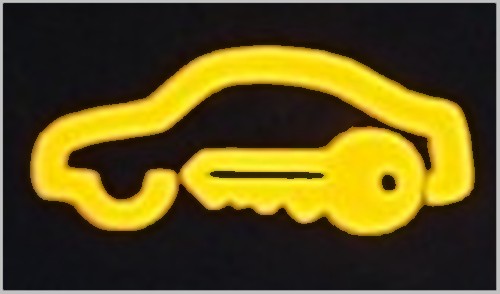 |
| The dreaded Immobilizer symbol |
Looking through my database of immobilizer issues, some of which I have shared with you below, gives you a fair idea of what can be expected from your VAG vehicle in the future. VW, Seat, Skoda and Audi vehicles comes out with a various versions of theft deterrent software systems, starting with vehicles without an Immobilizer (Pre 1995), to Immobilizer I (Immo I - 1996), to Immobilizer II (Immo II - 2002+), to Immobilizer III (Immo III) aka Transponder III, to Immobilizer IV (Immo IV) and the 5th generation Immobilizer (Immo V - 2011). There are also various Immobilizer hardware integrated into the instrument cluster, two of which are (J285 & J334 Immobilizer Control Module) and (J285 & J362 Immobilizer Control Module). Not to state the obvious, VAG cars are equipped with Anti-Theft Engine Disable immobilizers to circumvent theft; and should a car thief swap-out an ECU without matching it to instrument cluster, the engine will start briefly then die and this will be repeated indefinitely.
 |
| AUDI, SEAT, SKODA and VW AVITARS |
Since the implementation of Immo 3, variable code evaluation is use in both the engine control unit and Immobilizer control unit. They use an equation / algorithm that calculates the generated variable code that both control units must agree upon. So, if you ever start your car and it stalls after about 1 second, then its perfectly safe to suspect the Immobilizer as faulty whether it displays the immobilizer symbol or not. In such a case the DTC memory should be checked and, if necessary, the control module adapted. Whether or not the has Immobilizer disabled the ECU can be verified under address word 17, and or address word 25, using a scan tool like VCDS, ODIS, Launch, Autoboss, Autel MaxiDAS, etc. The data whether ON or OFF, sits in measuring block 007 under Central locking. Most importantly the DTC are the clues that's going to point you in the right direction.
 |
ODIS is the latest VW, AUDI SEAT SKODA, BENTLEY,
LAMBORGINI and PORSCHE Diagnostic Software. |
So, when the ignition is switched ON, the Instrument cluster / Immobilizer Control Module enables or disables specific vehicle functions based on a hand shake. What this means is that when the switchblade key is pushed into the ignition lock, or placed in proximity of the coil transmitted radio signal, the instrument cluster electronics detects the key and initiates a data transfer between the pickup coil in the steering column or ignition switch and the RFID (Radio Frequency Identification) capsule embedded in the fob key. If the correct / unique identification number / authorized security data stream is received at the Immobilizer Control Module it permits the engine to start and idle uninhibited. But if it doesn't the car wont start.
 |
| RFID capsules are tiny, it stores data unique to your car and can be found inside your fob key. |
The list below constitutes just a smatter of immobilizer errors that VAG car owners can experience, which range from a low fob key battery, to an instrument cluster or ECU replacement. And somewhere in between you will have, wiring harness issues ranging from intermittent to open circuit and even short circuit. Active RFID tags have their own power source whereas passive RFID tags used in all fob keys don't require power.
Essentially they consist of a scanning antenna, a transceiver with a decoder to interpret the data and a transponder - the RFID tag - that has been pre-programmed with the relevant information specific to your VIN, ECU and Instrument cluster. A dry joint on the pickup coil inside the capsule can prevent the necessary hand shake thus its a good idea to have a second matched fob key available if the key that won't start the car is suspect. In the list below, you also find appropriate codings for Immobilizer Module address 25 and as can be clearly seen, different control modules have different ODX/ASAM datasets, different software versions and different .rod files. Before changing any codes, make certain that you have a printed copy of all existing codes.
Immobilizer DTCs, Immobilizer Errors, Immobilizer Problems & Codes
Address 25: Immobilizer
Cannot be reached
--------------------------------------------------
Address 25: Immobilizer
unobtainable
--------------------------------------------------
Address 25: Immobilizer
DTCs not supported by controller
or a communication error ocurred
--------------------------------------------------
Address 25: Immobilizer
16897 - Incorrect Immobilizer code
P0513 - 35-00 - Malfunction in Circuit
17978 - Motronic Engine Control Module (ECM) -J220- Electronically locked
P1570 - 35-00 - Malfunction in Circuit
--------------------------------------------------
Address 25: Immobilizer
Part No: 6X0 953 257
Component: IMMO 0008
Coding: 00001
Excessive Comm Errors
--------------------------------------------------
Address 25: Immobilizer
Control unit: 6Y0 920 883 M
Component: IMMOBILIZER VDO V04
Coding: 00102
--------------------------------------------------
Address 25: Immobilizer
Part No: 6Q0 920 825 E
Component: IMMOBILIZER VDO V06
Coding: 03144
01176 - Key
07-00 - Signal too Low
--------------------------------------------------
Address 25: Immobilizer
Part No SW: 1K0 920 874 JX HW: 1K0 920 874 JX
Component: IMMO 3HL 2416
Revision: V0005000 Serial number: VWX7Z0G524F0LU
01176 - Key
008 - Implausible Signal - Intermittent
--------------------------------------------------
Address 25: Immobilizer
Controller: 6H0 953 257 B
Component: IMMO VWZ3Z0X1234088 V71
Coding: 09600
01176 - Key
65-10 - Unauthorized - Intermittent
--------------------------------------------------
Address 25: Immobilizer
Controller: 038 906 019 DQ
Component: 1,9l R4 EDC 0000SG 1536
Coding: 00002
17978 - Engine Start Blocked by Immobilizer
P1570 - 35-00 - Malfunction in Circuit
16989 - Internal Control Module: ROM Error
P0605 - 35-00 - Implausible Signal
--------------------------------------------------
Address 25: Immobilizer
Controller: 4A0 953 234 F
Component: IMMO AUZ9Z0T7884365 D77
Coding: 00000
01176 - Key
07-10 - Signal to Low - Intermittent
00750 - Warning Lamp
31-10 - Open or Short to Ground - Intermittent
--------------------------------------------------
Address 25: Immobilizer
Part No: 6L0 920 803 E
Component: IMMOBILIZER AGD V05
Coding: 00105
01177 - Engine Control Unit
65-10 - Unauthorized - Intermittent
--------------------------------------------------
Address 25: Immobilizer
Part No: 6X0 953 257
Component: IMMO 0003
Coding: 00003
00750 - Warning Lamp
31-00 - Open or Short to Ground
01314 - Engine Control Module
49-10 - No Communications - Intermittent
01176 - Key
65-10 - Unauthorized - Intermittent
--------------------------------------------------
Address 25: Immobilizer
Part No: 4A0 953 234
Component: IMMO AUZ9Z0W5254731 D77
Coding: 00000
01176 - Key
07-10 - Signal too Low - Intermittent
--------------------------------------------------
Address 25: Immobilizer
Part No SW: 1T0 920 873 E HW: 1T0 920 873 E
Component: IMMO VDD 3808
Revision: V0001000 Serial number: VWX7Z0G33ND1A0
00003 - Control Module
014 - Defective
--------------------------------------------------
Address 25: Immobilizer
Part No: 1H0 953 257 B
Component: IMMO VWZ3Z0M2519376 V00
Coding: 09600
00546 - Data wiring faulty
27-00 - Implausible Signal
--------------------------------------------------
Address 25: Immobilizer (J334)
Part No SW: 5K0 953 234 HW: 5K0 953 234
Component: IMMO H03 0607
Serial number: 00000000000000
Coding: 000000
ASAM Dataset: EV_Immo_UDS_VDD_RM09 A03009
ROD: EV_Immo_UDS_VDD_RM09_SE36.rod
9456681 - Key
B104C 29 [009] - Implausible Signal
Confirmed - Tested Since Memory Clear
--------------------------------------------------
Address 25: Immobilizer
Part No: 1H0 953 257 B
Component: IMMO VWZ3Z0E1731908 V00
Coding: 09600
00546 - Data wiring faulty
27-00 - Implausible Signal
01181 - Initializing; Only 2 Keys Learned
35-00 - Implausible Signal
01179 - Incorrect Key Programming
35-00 - Implausible Signal
--------------------------------------------------
Address 25: Immobilizer
Part No: 1K0 920 960 L
Component: IMMO 3354
02241 - Engine Control Module; Immobilizer Data not Adapted
000 - - - Intermittent
--------------------------------------------------
Address 25: Immobilizer
Part No SW: 3C0 959 433 H HW: 3C0 959 433 H
Component: IMMO
038 0364
Revision: 00038000 Serial number: VWZCZ000000000
Part No: 3C0 905 861 C
Component:
ELV
023 0350
3C0905861C
ELV
023 0350
02823 - Requirements for Locking the Steering Column Lock not met
000 - - - Intermittent
02861 - Electronic Steering Column Lock Check Sum Error
008 - Implausible Signal - Intermittent
02815 - Steering Column Lock; Supply Voltage for Locking Motor
002 - Lower Limit Exceeded - Intermittent
02817 - Steering Column Lock; Enabling Wire from Steering Wheel Electronics
002 - Lower Limit Exceeded - Intermitten
02818 - Steering Column Lock; Enabling for Electronic Ignition Lock
009 - Open or Short to Ground
02811 - Control Module for Electronic Steering Column Lock (J764)
014 - Defective - Intermittent
--------------------------------------------------
Address 25: Immobilizer
Part No: 2K0 920 941 CX
Component: IMMO VDD 0716
--------------------------------------------------
Address 25: Immobilizer
Part No: 1P0 920 825 B
Component: IMMO VO3 0424
--------------------------------------------------
Address 25: Immobilizer
Part No: 6Q0 920 923 Q
Component: IMMOBILIZER VDO V03
Coding: 01444
--------------------------------------------------
Address 25: Immobilizer
Part No: 6Q0 920 923 R
Component: IMMOBILIZER VDO V02
Coding: 01432
--------------------------------------------------
Address 25: Immobilizer
Part No: 6Q0 920 903 J
Component: IMMOBILIZER VDO V06
Coding: 01431
--------------------------------------------------
Address 25: Immobilizer
Controller: 6Q0 920 825 E
Component: IMMOBILIZER VDO V03
Coding: 01144
--------------------------------------------------
Address 25: Immobilizer
Part No: 6Q0 920 825 F
Component: IMMOBILIZER AGD V05
Coding: 01132
--------------------------------------------------
Address 25: Immobilizer
Part No: 6Q0 920 804
Component: IMMOBILIZER VDO V06
Coding: 01131
--------------------------------------------------
Address 25: Immobilizer (J334)
Part No SW: 5K0 953 234 HW: 5K0 953 234
Component: IMMO H04 0406
Serial number: 00000000000000
Coding: 000000
ASAM Dataset: EV_Immo_UDS_VDD_RM09 A03008
ROD: EV_Immo_UDS_VDD_RM09_SE25.rod
--------------------------------------------------
Address 25: Immobilizer (J334)
Part No SW: 6J0 920 901 A HW: 6J0 920 901 A
Component: IMMO X07 0110
Serial number:
ASAM Dataset: EV_Immo_UDS_VDD_RM09 A03004
ROD: EV_Immo_UDS_VDD_RM09_SE25.rod
--------------------------------------------------
Address 25: Immobilizer (J334)
Part No SW: 6R0 920 861 B HW: 6R0 920 861 B
Component: IMMO H23 0110
Serial number:
ASAM Dataset: EV_Immo_UDS_VDD_RM09 A03004
ROD: EV_Immo_UDS_VDD_RM09_VN35.rod
--------------------------------------------------
Address 25: Immobilizer (J334)
Part No SW: 5K0 953 234 HW: 5M0 920 960 E
Component: IMMO H14 0112
Revision: X0014004 Serial number:
Coding: 000000
ASAM Dataset: EV_ImmoUDSMM9RM10 A01102
ROD: EV_ImmoUDSMM9RM10.rod
--------------------------------------------------
Address 25: Immobilizer (J334)
Part No SW: 5K6 920 970 G HW: 5K6 920 970 G
Component: IMMO H05 0206
Serial number: 00000000000000
ASAM Dataset: EV_Immo_UDS_VDD_RM09 A03004
ROD: EV_Immo_UDS_VDD_RM09_VW36.rod
--------------------------------------------------
Address 25: Immobilizer
Part No SW: 3C0 959 433 AR HW: 3C0 959 433 AR
Component: IMMO 043 0383
Revision: 00043000 Serial number: VWZCZ000000000
Part No: 3C0 905 861 H
Component: ELV 028 0380
3C0905861H ELV 028 0380
--------------------------------------------------
Address 25: Immobilizer
Part No SW: 1K6 920 974 H HW: 1K6 920 974 H
Component: IMMO VDD 2416
Revision: V0003000 Serial number: VWX7Z0H43NL82Z
--------------------------------------------------
Address 25: Immobilizer
Controller: 6X0 953 257
Component: IMMO 0007
Coding: 00001
--------------------------------------------------
Address 25: Immobilizer
Part No: 5P0 920 825 A
Component: IMMO VO3 0422
--------------------------------------------------
Address 25: Immobilizer
Part No SW: 1Z0 920 912 E HW: 1Z0 920 912 E
Component: IMMO VD1 1610
Revision: V1610056 Serial number: SKZ7Z0G4047329
--------------------------------------------------
Address 25: Immobilizer (J334)
Part No SW: 5K0 953 234 HW: 5K0 953 234
Component: IMMO H03 0505
Serial number:
Coding: 000000
ASAM Dataset: EV_Immo_UDS_VDD_RM09 A03009
ROD: EV_Immo_UDS_VDD_RM09_VW25.rod
--------------------------------------------------
Address 25: Immobilizer
Part No SW: 8P0 920 931 HW: 8P0 920 931
Component: KOMBIINSTR. VDO H18 0560
Revision: D0H18002 Serial number: AUX7Z0F6FN5049
-------------------------------------------------
Address 25: Immobilizer
Controller: 6X0 953 257
Component: IMMO 0003
Coding: 00001
--------------------------------------------------
Address 25: Immobilizer
Controller: 6X0 953 257
Component: IMMO 0008
Coding: 00001
--------------------------------------------------
Address 25: Immobilizer (J334)
Part No SW: 5K0 953 234 HW: 5K0 953 234
Component: IMMO H07 0705
Serial number: 00000000000000
Coding: 000007
ASAM Dataset: EV_Immo_UDS_VDD_RM09 A03709
ROD: EV_Immo_UDS_VDD_RM09_SE36.rod
--------------------------------------------------
Address 25: Immobilizer (J334)
Part No SW: 5K0 953 234 HW: 5K0 953 234
Component: IMMO H07 0308
Serial number:
Coding: 000000
ASAM Dataset: EV_Immo_UDS_VDD_RM09 A03005
ROD: EV_Immo_UDS_VDD_RM09_SE35.rod
--------------------------------------------------
Address 25: Immobilizer (J334)
Part No SW: 5K0 953 234 HW: 5K0 953 234
Component: IMMO H03 0607
Serial number:
Coding: 000000
ASAM Dataset: EV_Immo_UDS_VDD_RM09 A03009
ROD: EV_Immo_UDS_VDD_RM09_VW36.rod
--------------------------------------------------
Address 25: Immobilizer (J334)
Part No SW: 6J0 920 901 A HW: 6J0 920 901 A
Component: IMMO X07 0110
Serial number:
ASAM Dataset: EV_Immo_UDS_VDD_RM09 A03004
ROD: EV_Immo_UDS_VDD_RM09_SE25.rod
--------------------------------------------------
Address 25: Immobilizer
Part No: 1P0 920 904 C
Component: IMMO VO3 0422
--------------------------------------------------
Address 25: Immobilizer
Controller: 6X0 953 257
Component: IMMO 0008
Coding: 00001
--------------------------------------------------
Address 25: Immobilizer
Part No: 6Q0 920 903 J
Component: IMMOBILIZER VDO V06
Coding: 01431
--------------------------------------------------
Address 25: Immobilizer
Part No: 6Q0 920 923 R
Component: IMMOBILIZER VDO V06
Coding: 01432
--------------------------------------------------
Address 25: Immobilizer
Part No SW: 1K0 920 953 P HW: 1K0 920 953 P
Component: IMMO 3HL 1610
Revision: V0003000 Serial number: VWZ7Z0G9079540
--------------------------------------------------
Address 25: Immobilizer
Part No SW: 3AA 959 433 HW: 3AA 959 433
Component: IMMO 043 0399
Revision: 00043000 Serial number: VWZCZ000000000
Subsystem 1 - Part No: 3C0 905 861 J
Component: ELV 029 0380
3C0905861J ELV 029 0380
--------------------------------------------------
Address 25: Immobilizer
Part No SW: 3C0 959 433 AQ HW: 3C0 959 433 AQ
Component: IMMO 044 0383
Revision: 00044000 Serial number: VWZCZ000000000
Part No: 3C0 905 861 G
Component: ELV 027 0380
3C0905861G ELV 027 0380
--------------------------------------------------
Address 25: Immobilizer
Part No SW: 8P0 920 981 A HW: 8P0 920 981 A
Component: KOMBIINSTR. VDO H73 0300
Revision: D04 Serial number: AUX7Z0E1FNG04N
--------------------------------------------------
Address 25: Immobilizer
Part No SW: 8P0 920 900 F HW: 8P0 920 900 F
Component: KOMBIINSTR. VDO H72 0210
Revision: D03 Serial number: AUX7Z0D9FND0BK
--------------------------------------------------
Address 25: Immobilizer
Part No SW: 8J0 920 980 G HW: 8J0 920 980 G
Component: KOMBIINSTR. VDO H02 0480
Revision: D0H02002 Serial number: AUX7Z0I4FNJ115
--------------------------------------------------
Address 25: Immobilizer
Part No SW: 1K0 920 974 N HW: 1K0 920 974 N
Component: IMMO 3HL 2418
Revision: V0003000 Serial number: VWX7Z0H824U00R
